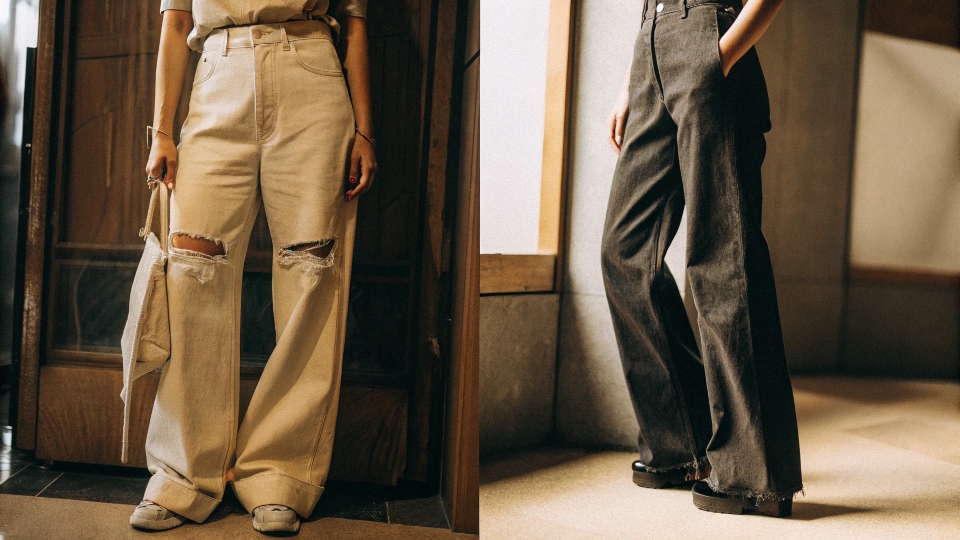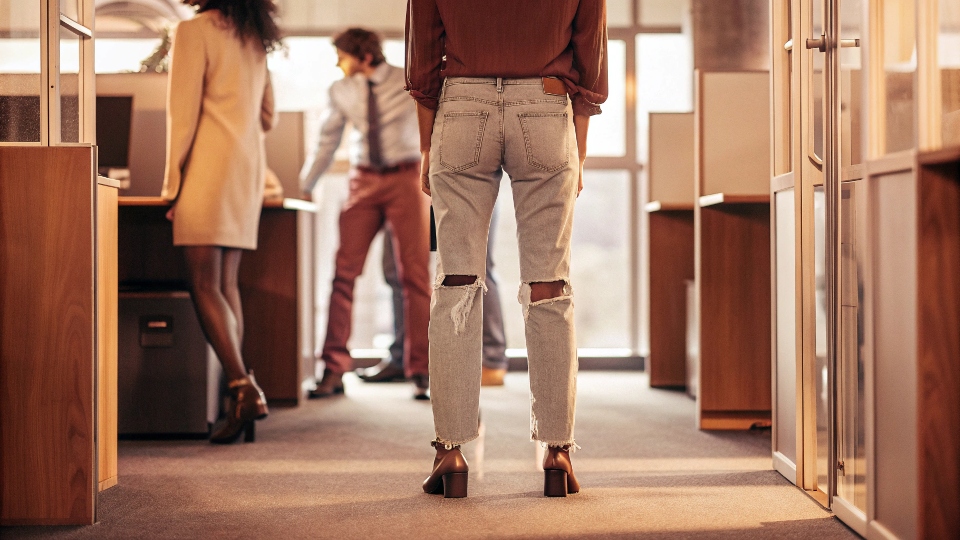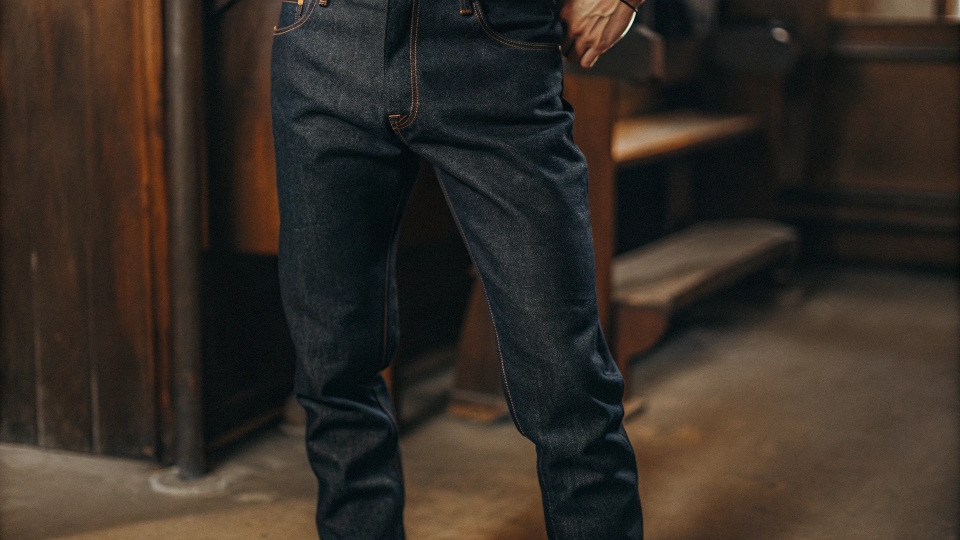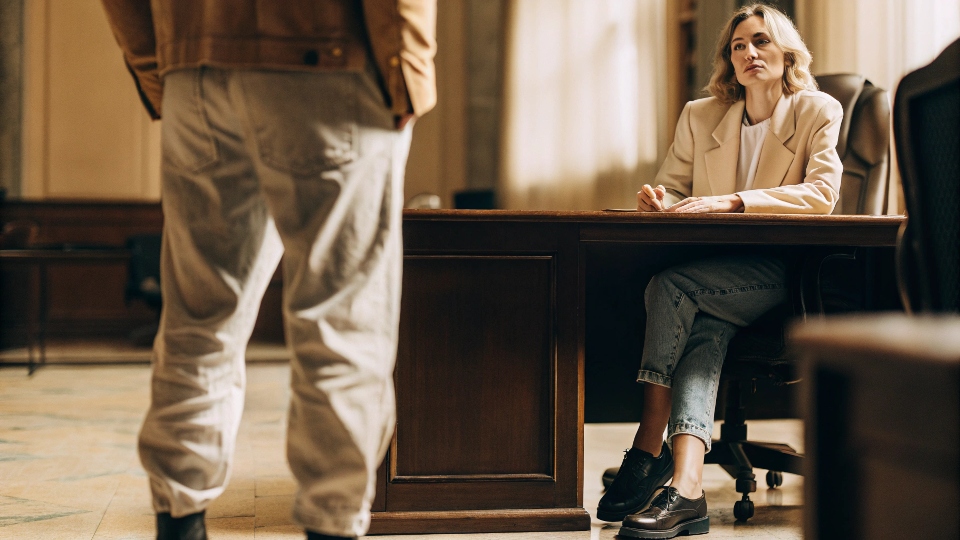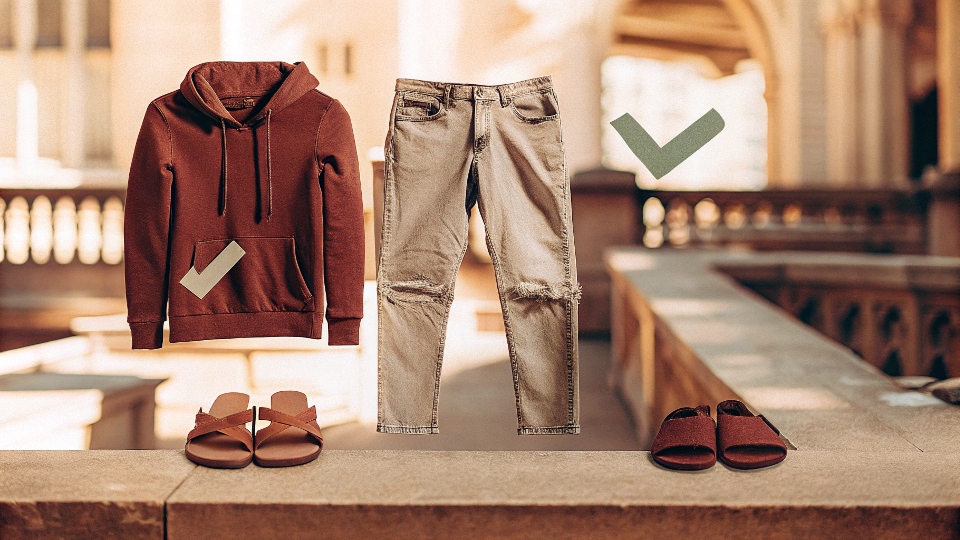You love the comfort and modern style of baggy jeans1, but you're hesitant to wear them to the office. You worry they'll make you look unprofessional and sloppy in a work environment.
Generally, baggy jeans are not considered business casual2. Their slouchy, relaxed fit is seen as too informal for most professional settings. However, in very creative workplaces, a structured pair3 in a dark, clean wash might be acceptable if styled correctly.
The rules for office wear have changed so much. At my denim factory, DiZNEW, we now produce a huge range of fits, from super skinny to extremely wide-leg. A designer I work with, Dean, recently asked me about creating a more "professional" baggy jean.
This got me thinking. Over my 20 years in this business, I've learned that the line between casual and professional is all about the details: the fabric, the wash, the cut, and most importantly, the context.
While traditional baggy jeans are a clear 'no', the modern interpretation of a wide-leg or relaxed-fit jean can sometimes cross over into acceptable territory, but you have to be very careful.
Do baggy jeans look unprofessional?
You put on your favorite comfy baggy jeans for work, feeling great. But you catch a glimpse in the mirror and suddenly feel a pang of doubt. Do you look cool and relaxed, or just plain lazy?
Yes, in most cases, baggy jeans do look unprofessional. Styles with heavy distressing4, rips, light washes, or a very low-slung, slouchy fit are firmly in the casual category and can make you appear unkempt in a business setting.
The core issue is what the silhouette communicates. A tailored, structured garment signals precision, attention to detail, and seriousness.
A baggy, slouchy silhouette signals the opposite: relaxation, casualness, and comfort. While there's nothing wrong with being comfortable, in a professional context, it can be misinterpreted as a lack of care or respect for your role.
At the factory, we use different types of denim for different fits. A baggy jean is often made from a lighter-weight, softer denim to help it drape and feel lived-in.
In contrast, a pair of work-appropriate trousers, even denim ones, would use a heavier, stiffer fabric to hold a sharp crease and maintain a clean line. It's this structure that separates a professional garment from a casual one.
Factors That Determine Professionalism
| Feature | Unprofessional | Potentially Professional |
|---|---|---|
| Wash | Light blue, acid wash, heavy fading | Solid dark indigo, black, charcoal grey |
| Distressing | Rips, holes, frayed hems, paint splatters | Clean finish, no distressing at all |
| Fit | Very wide, low-crotch, stacks on shoes | A relaxed straight cut, a structured wide-leg |
| Styling | Paired with hoodies, graphic tees, sneakers | Paired with a blazer, button-down shirt, loafers |
What jeans are okay for business casual?
You want the comfort of denim at work, but the "business casual" dress code is confusing. You're afraid of choosing the wrong pair and getting a warning from HR.
The safest and best jeans for business casual are a straight-leg or slim-fit cut5 in a solid dark wash, like deep indigo or black. They must have a clean finish with no distressing, rips, or significant fading.
Think of your business casual jeans as denim trousers6, not your weekend pants. The goal is to mimic the look of a classic chino or dress pant, but in denim.
The dark, uniform color is key because it's more formal and versatile, allowing it to be paired easily with blazers, blouses, and dress shirts. We achieve this solid color at the factory through a process called a "rinse wash," which just slightly softens the raw denim without removing much of the deep indigo dye.
The fit is just as important. A slim or straight cut follows the natural line of your leg without being tight like a skinny jean or loose like a baggy one.
It presents a clean, polished, and modern silhouette that looks intentional and put-together.Always make sure they are the proper length7, either hemmed or cuffed neatly, and not dragging on the floor.
Can I wear baggy jeans to a job interview?
You have an interview for your dream job in a cool, creative industry. You want to show your personal style with trendy baggy jeans, but you fear it might cost you the offer.
No, you should never wear any kind of jeans, especially baggy jeans, to a job interview. An interview is your one chance to make a great first impression, and your clothing should signal professionalism, respect, and seriousness.
Even if the company has a very casual dress code, an interview is a formal occasion. Your choice of clothing is part of your communication. Dressing professionally shows that you understand business etiquette and that you take the opportunity seriously.
Wearing baggy jeans, no matter how stylish, sends the message that you are either unaware of professional norms or that you don't care about them. Neither is a good signal to a potential employer.
When I'm hiring for key roles at my factory, whether it's in operations or design, I expect candidates to present themselves in the best possible light. It tells me about their judgment.
The safest and most effective choice is always traditional business attire: dress pants or a skirt, a pressed shirt or blouse, and a blazer. Your skills should be the focus, not your fashion choices.
What is not acceptable for business casual?
Your office has a "business casual" policy, but it's not clearly defined. You're constantly worried that what you think is acceptable might cross a line and get you in trouble.
Anything that you would wear to the beach, the gym, or to do chores at home is not business casual. This includes items with rips or stains, graphic t-shirts, hoodies, shorts, flip-flops, and most athletic wear.
The word "business" is the most important part of "business casual." Your outfit should still be appropriate for a professional environment where you might interact with clients, customers, or senior leadership at any moment.
The goal is to look polished, neat, and put-together. Denim can fit into this, but only a certain kind. The same rule applies to everything else in your closet. A clean, plain t-shirt might be okay under a blazer in some offices, but a t-shirt with a loud band logo or a political slogan is not.
Clean, minimalist leather sneakers might pass, but worn-out running shoes or flip-flops will not. It's all about maintaining a certain level of polish and avoiding anything that looks overly relaxed, worn-out, or attention-grabbing for the wrong reasons.
Business Casual: Keep It Clean and Simple
| Category | Generally Acceptable | Generally Not Acceptable |
|---|---|---|
| Pants | Chinos, dress pants, dark/clean jeans | Ripped jeans, shorts, leggings, sweatpants |
| Tops | Button-down shirts, blouses, polos, sweaters | Graphic tees, tank tops, crop tops, hoodies |
| Outerwear | Blazers, cardigans, sport coats | Denim jackets, sweatshirts, athletic zip-ups |
| Shoes | Loafers, flats, dress shoes, clean sneakers | Flip-flops, sandals, running shoes, hiking boots |
Conclusion
Baggy jeans are too informal for business casual. Instead, choose dark, clean, straight-leg jeans and pair them with smart tops and shoes to maintain a professional look at the office.
-
Explore this link to understand the professional perception of baggy jeans in various work environments. ↩
-
Learn about the nuances of business casual attire and how to dress appropriately for the workplace. ↩
-
Discover how structured jeans can bridge the gap between casual and professional looks. ↩
-
Understand the impact of distressing on denim's professionalism and when it's appropriate. ↩
-
Explore the characteristics of slim-fit jeans and why they are ideal for business casual. ↩
-
Discover styling tips for denim trousers to achieve a polished look suitable for the office. ↩
-
Learn about the importance of proper length in jeans for a professional appearance. ↩

